What is a RJ45 Connector?
RJ45 connector is a standard connector, mainly used in Ethernet to connect various network devices, such as computers, routers, switches, etc. It has the characteristics of standardized interfaces, reliable structure, and easy installation, making it a common and cost-effective network connection technology that plays an important role in modern network and communication fields.

Components of RJ45 Connectors
RJ45 connectors typically consist of plastic housing and 8 metal contacts.
Plastic shells are usually made of high-quality PC materials.
The contact points are made of phosphor bronze, and each contact point is nickel plated to ensure its oxidation resistance, and further gold plated to improve data performance. The gold plating thickness is optional, usually available in Fu, 3u, 6u, 30u, and 50u.
In addition, the contact points of RJ45 connector can be 2 or 3 prong contacts , with 2 prong contacts are usually used for multi stranded wires and 3 prong contacts are suggested for multi stranded wires and solid wires. 3 pronged connector crosses the wire through three pins, resulting in a larger connection contact area. Therefore, it is more suitable for high-performance transmission requirements.

Category of RJ45 Connector
The selection of RJ45 connector depends on the corresponding network cable, which means that the RJ45 connector should have the same grade and performance as the cable to match, ensuring the best performance and compatibility of network applications.
At present, the main categories of RJ45 connectors are as follows:
| Category | Transmission Frequency | Transmission Speed | Application |
| CAT5E | 100Mhz | 1000Mbps | general household and small business environments |
| CAT6 | 250Mhz | 1000Mbps | medium-sized office and enterprise environments |
| CAT6A | 500Mhz | 10Gbps | large enterprises, high-density environments, and professional applications |
| CAT7 | 600Mhz | 10Gbps | data centers, high-speed and bandwidth intensive applications |
RJ45 Connector Types
RJ45 connectors can be classified according to different standards. Next, we will list several common types of RJ45 connectors.
By Shielding Type
Unshielded RJ45 Connector
Unshielded RJ45 connectors, also known as UTP RJ45 connectors, do not have the additional metal housing or shield. They rely entirely on the twisting of the paired wires within the cable to cancel out electromagnetic interference. Although UTP connectors provide less EMI protection compared to STP RJ45 connectors, they are usually more cost-effective and are widely used in standard Ethernet networks.
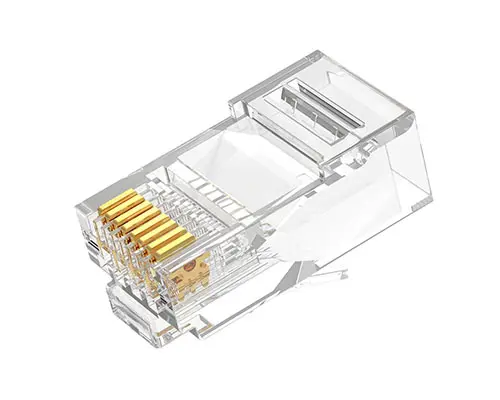
Shielded RJ45 Connector
Shielded RJ45 connectors have an additional metal shield around the connector. This shielded design helps block external electromagnetic interference, such as electromagnetic radiation from other electronic devices or power sources and provides better protection against EMI, allowing for improved signal transmission and reduced signal loss.
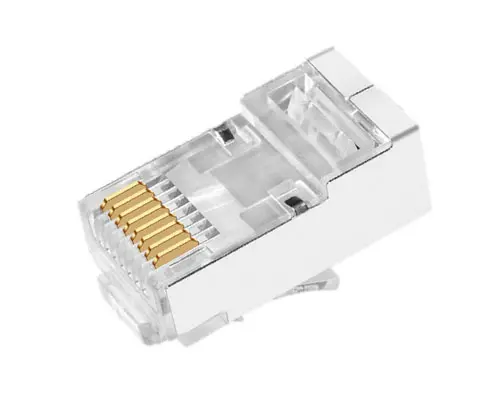
By Internal Structure
Non Pass Through RJ45 Connector
Non pass-through Connector is a typical RJ45 connector that can be used in conjunction with most standard crimping tools. During the installation process, the wires cannot directly pass through the bottom of the connector, making the installation relatively complex.
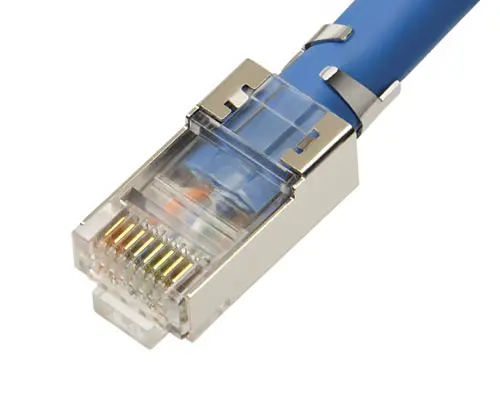
Pass Through RJ45 Connector
Pass through RJ45 connector allows wires to pass directly through the bottom of the connector, ensuring correct wire sequence and controlling the length of reserved network cables. It provides a simpler installation process and makes it easier to ensure the quality of the connection, but it usually requires specific crimping tools.

By Installation Method
Standard RJ45 Connector
Standard RJ45 connector requires the use of professional RJ45 crimping tools during installation, which is more complex than toolless connectors, but can provide higher connection quality and stability.

Toolless RJ45 Connector
Toolless RJ45 connector does not require additional crimping tools. Tool-free design typically includes a snap-on mechanism that allows for a fast and easy installation process, saving time and effort, is suitable for various network requirements for fast wiring and temporary connections.
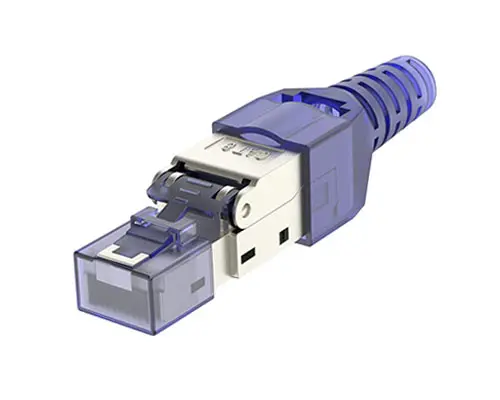
Wiring Standard
RJ45 connector is used to connect Ethernet cables, and there are currently two wiring standards for twisted pair cables, T568A and T568B. The two standards define the wiring sequence of 8 wires, with the main difference being the wiring sequence of orange and green wires.
At present, T568B is more widely used in the market, but there is no difference in performance between two standards. As long as the wiring standards at both ends are consistent, communication can proceed normally.
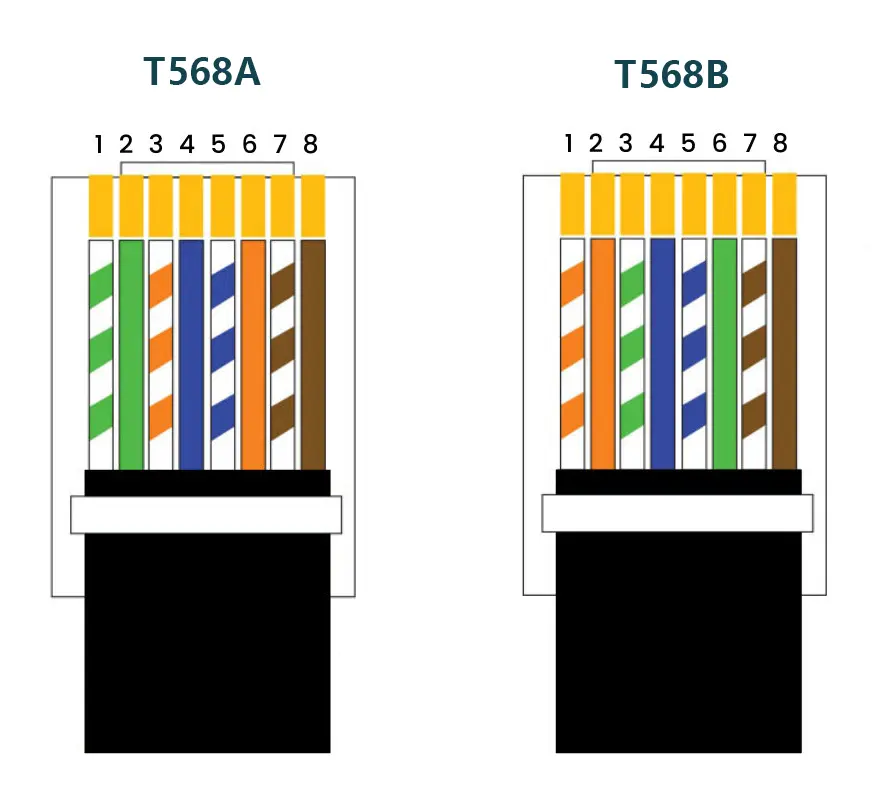
How to Crimp a RJ45 Connector
If you are not clear about how to assembly a standard RJ45 connector, Gcabling provides complete installation steps to assist you.

Application of RJ45 Connectors
RJ45 connector, as a standard interface, plays a crucial role in connection performance during network transmission. High-quality RJ45 connectors can ensure low signal loss and minimal interference, achieving high-speed data transmission, and have been widely used in the fields of network and communication.
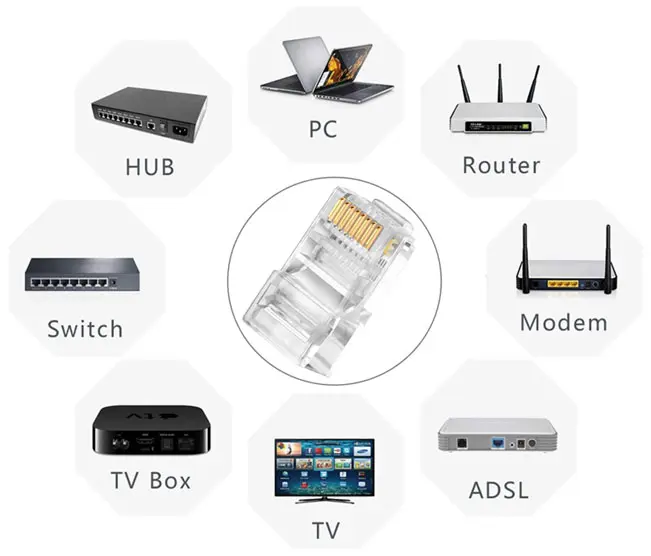
Gcabling RJ45 Connector
Gcabling can supply a wide range of RJ45 connectors bulk, here we list some hot-selling products.

